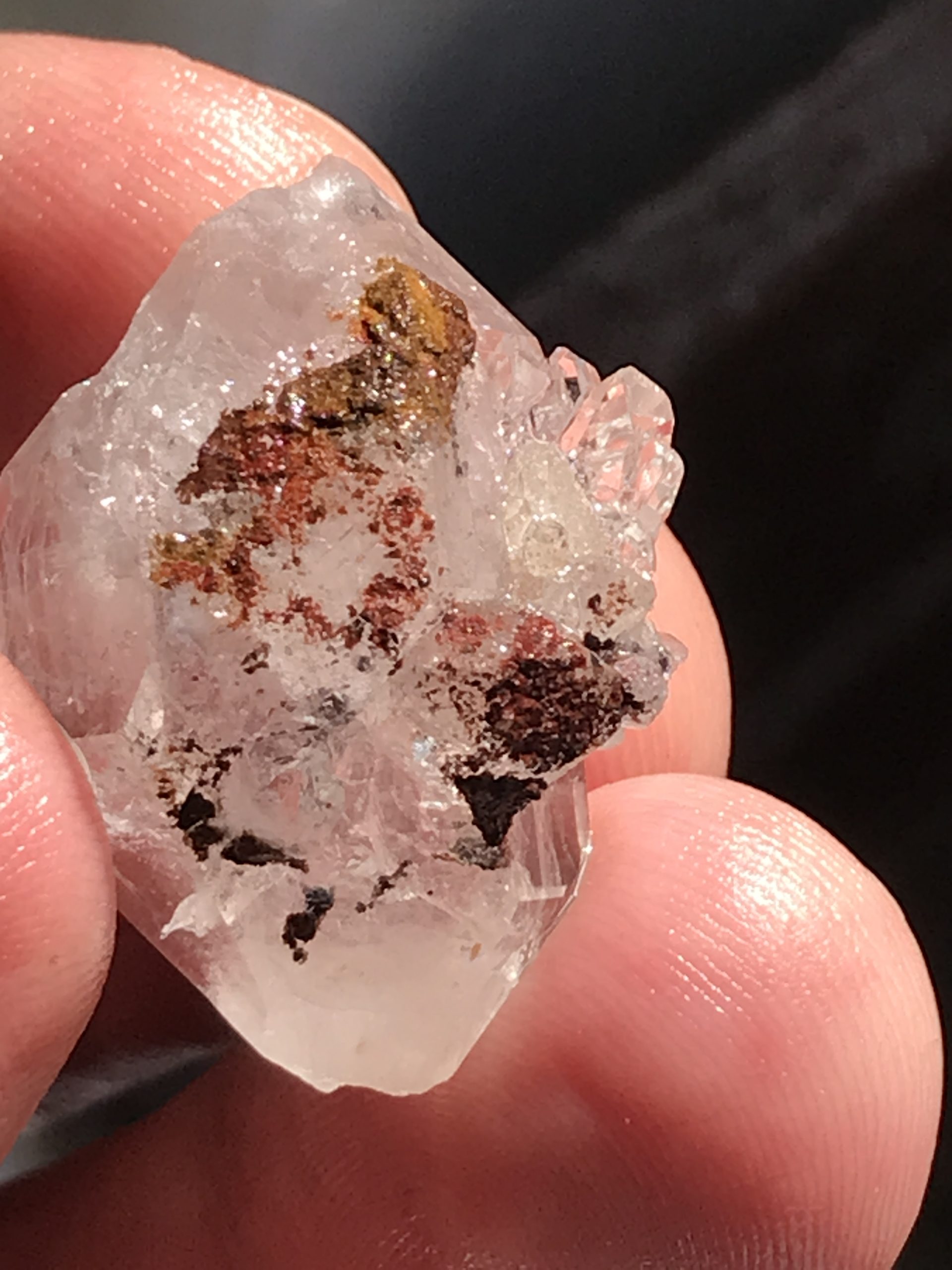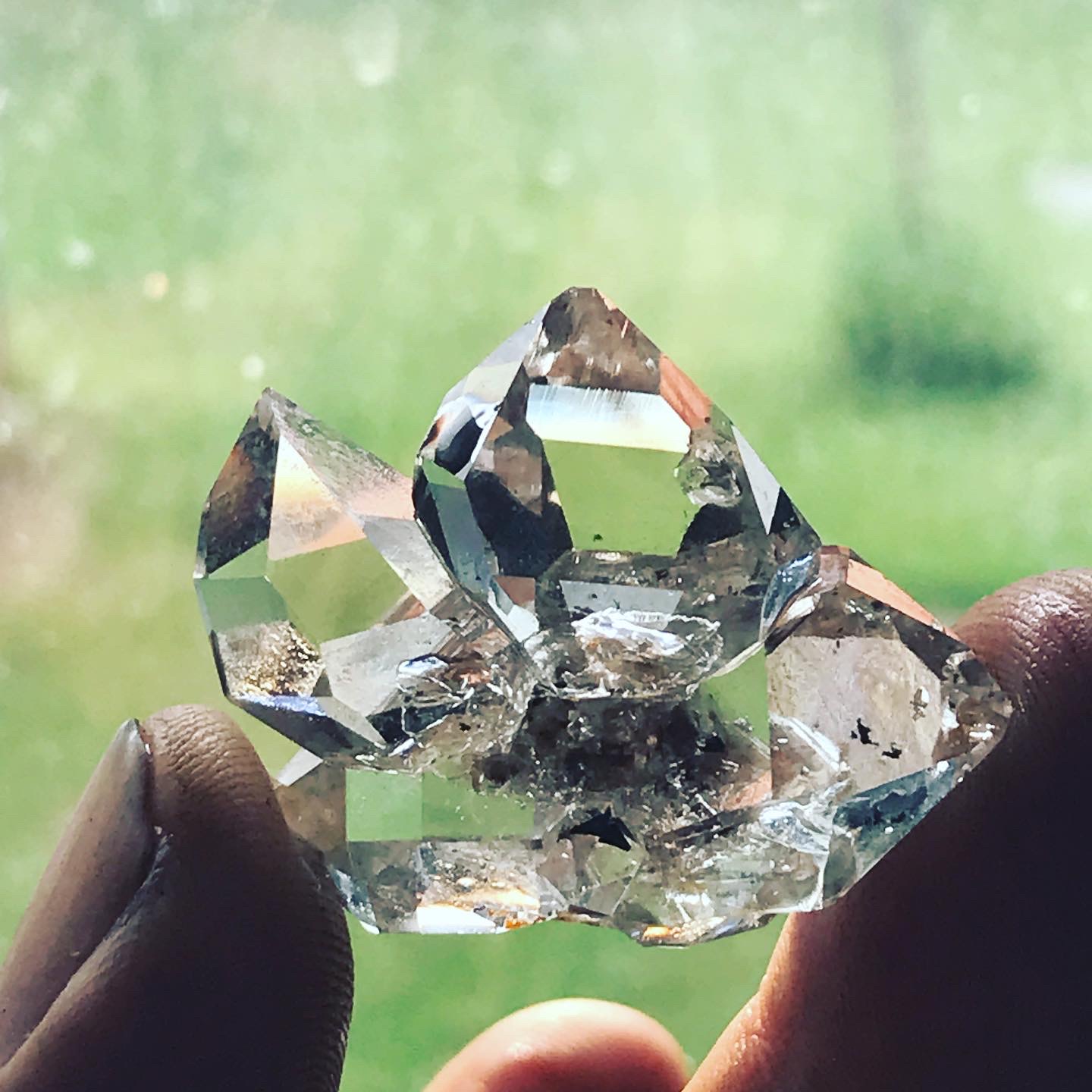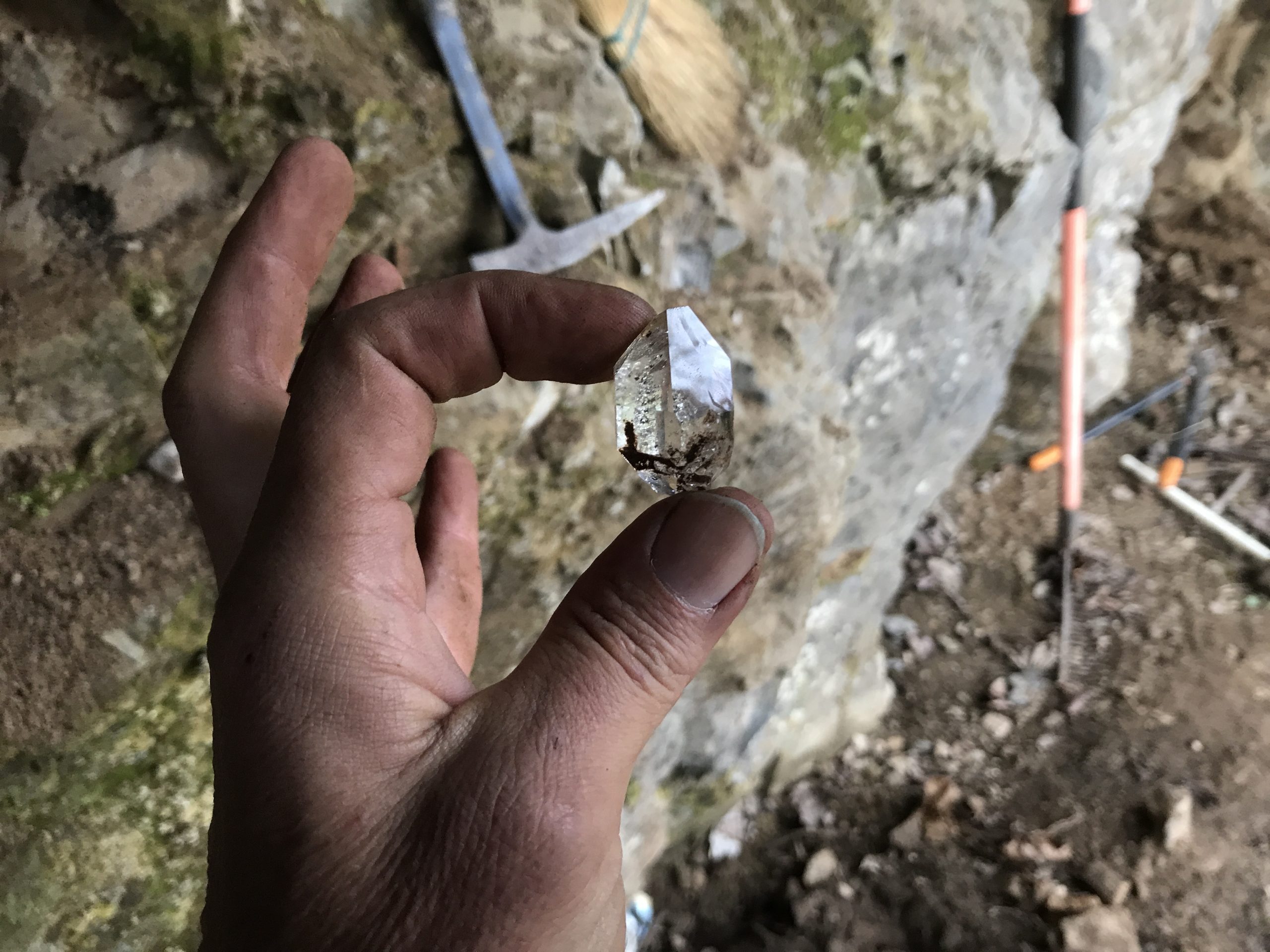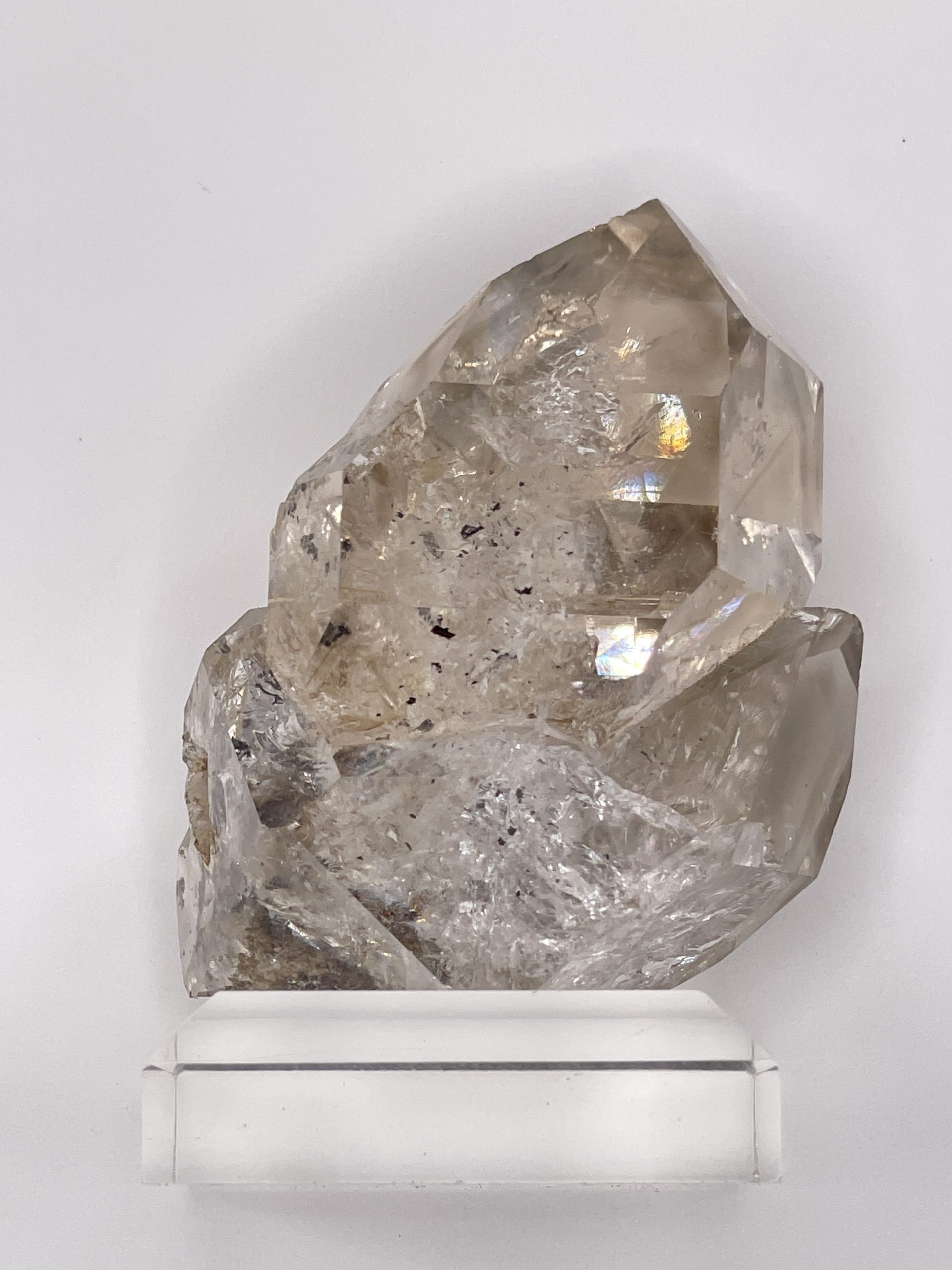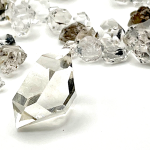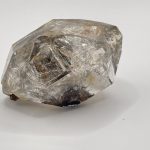New Wave Pocket
New Wave Pocket
The New Wave Pocket is an extraordinary Herkimer diamond pocket discovered in Middleville, New York, which has gained attention for the exceptional inclusions it contains. These Herkimer diamonds are not true diamonds, but rather quartz crystals known for their clarity, natural faceting, and unique formation. The New Wave Pocket, in particular, is notable for containing red hematite, limonite, and carbon inclusions, which make it one of the most visually captivating and scientifically significant finds in the world of Herkimer diamonds.
Formation of the New Wave Pocket:
The formation of Herkimer diamonds begins in ancient limestone pockets that were once part of an underwater reef during the Ordovician period (approximately 450 million years ago). Over the course of millions of years, geological processes such as volcanic activity and hydrothermal mineralization transformed these pockets into a rock known as dolostone, creating the cavities in which Herkimer diamonds would later form.
The unique characteristics of the New Wave Pocket are the result of the interaction between the quartz crystals and a variety of minerals that were present during their formation. These minerals, including hematite, limonite, and carbon, were deposited into the cavities and became trapped inside the crystals as they grew.
-
Red Hematite Inclusion:
- Hematite is an iron oxide mineral, often found as a reddish-brown color. When hematite is trapped inside Herkimer diamonds, it can form thin, reddish inclusions that create striking contrasts against the transparent quartz. The red hematite in the New Wave Pocket is particularly remarkable because it adds vivid color and texture to the otherwise clear quartz, making the crystals visually stunning.
- The hematite inclusions are typically formed when iron-rich solutions enter the rock cavities and react with the surrounding environment, often under conditions of low temperature and high pressure.
-
Limonite Inclusion:
- Limonite, a hydrous iron oxide, is another mineral often associated with the formation of Herkimer diamonds. It typically forms under more oxidizing conditions when water interacts with iron-rich minerals. In the New Wave Pocket, limonite inclusions appear as yellow-brown or rust-colored deposits within the quartz crystals. These inclusions may create delicate, cloudy patterns within the crystal, contributing to its uniqueness and aesthetic value.
- Limonite forms through the alteration of other iron minerals (like hematite or magnetite), and its presence in the Herkimer diamonds from this pocket signals the presence of distinct geological processes in the region.
-
Carbon Inclusion:
- Carbon is often trapped within Herkimer diamonds during their formation, where it can form as black inclusions or cloudy areas within the otherwise clear quartz. In the New Wave Pocket, the carbon inclusions may appear as specks or streaks, contributing to the visual intrigue of the crystals. These inclusions often highlight the crystal’s natural growth patterns and add to the crystal’s overall beauty.
- Carbon’s presence in quartz is believed to occur when organic materials, such as plant matter, are trapped and fossilized within the mineral structure during the crystal’s growth.
February 14, 2025

